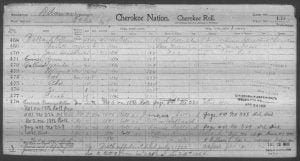Act of April 26, 1906
Public Number 129 AN ACT To provide for the final disposition of the affairs of the Five Civilized Tribes in the Indian Territory, and for other purposes. Be it enacted by the Senate and House of Representatives of the United States of America in Congress assembled, That after the approval of this Act no per son shall be enrolled as a citizen or freedman of the Choctaw, Chickasaw, Cherokee, Creek, or Seminole tribes of Indians in the Indian Territory, except as herein otherwise provided, unless application for enrollment was made prior to December first, nineteen hundred and five, and the … Read more




